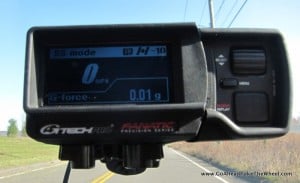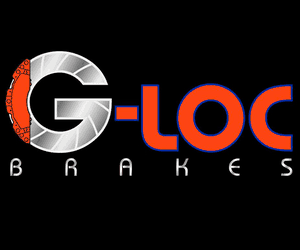It has now been several years that I’ve owned a fancy, expensive data system that cost $865 for the recording system plus another $300 for a dash display. Don’t get me wrong, it’s extremely robust and a powerful tool in the right hands. In fact, that’s a big part of the issue that I have with it. I’ve learned the hard way that although you may collect a lot of data, it’s meaningless if you don’t know how to interpret it. Like most of you, I don’t have a data geek at events to analyze the data then communicate its meaning to me. I did make attempts including purchasing a 120 page book on the subject, paid for some in person coaching on how to use it, but to be truthful I don’t have the required dedication to learn how use it properly. I didn’t find it simple or fun. For years it has served as an expensive lap timer and that’s about it.
On the other spectrum I have seen attempts of using a smart phone to collect this data. It’s a neat toy, but the accelerometers are not nearly as good for these purposes. Phones also come with a 1Hz GPS receiver which is adequate for navigation, but is not an accurate performance measurement tool. For comparison purposes, the data system we are reviewing utilizes a 10 Hz GPS receiver making it 10 times more accurate.
When we began our automotive testing section of this site, Real World Road Tests, we wanted to find a data tool that would accurately collect acceleration runs including 0 – 60 mph as well as some other performance tests. We stumbled upon a company that sells a system that met those needs for $199. As I conducted further research on the system, I learned that they also offer a more robust system built for motorsports. I was then really interested in learning more, as this model was only $299. The company’s website stated that it did everything the less expensive one did, plus it displays lap times, segment times, and serves as a data acquisition system to further analyze laps and sessions. If the system can actually do what they are marketing, it will be an ideal product for many of us.
To start with, the system is nice and easy to install. The compact display and data recorder can be put on a car’s windshield using the supplied suction cup, and is powered using a cigarette lighter socket. That’s it.
 What Can the G-Tech SS and RR Systems Do?
What Can the G-Tech SS and RR Systems Do?
Timed Acceleration Runs
Using the system to obtain 0 – 60 mph times is simple. With the system mounted, you’ll just need to press a button letting it know you’re ready to record a run. Then accelerate as fast as the car will go up to 60 mph, stop, and it will display the time. It will also store the runs information on either the internal memory or a micro SD car depending on how you have the system configured. 
In addition to measuring the 0 – 60 mph time, you can review the results directly on the systems screen or download it onto a computer using G-Tech’s free software. Using either method you can review the run in greater detail. For example, you can use the same run to gather 0 – 60 mph times, 40 – 60 mph times, or any other ranges you’d like to see. It will also allow you to test braking distances.
Measure Horsepower and Torque
Getting a car to the dyno can be a pain in the butt, and each session comes with a financial cost. What the G-Tech enables you to do is get baseline HP and Torque numbers, make a performance modification to the car, then quickly test it to see if any gains were made.
While you can enter data about the vehicle so that the system can more closely calculate these numbers, that’s really not the purpose of this system. However, this really isn’t all that different from a dyno where the operator and type of dyno being used have an impact the performance rating. (An article discussing this subject will be published in the future.)
Additionally, the RR System Offers the Following:
Lap Times, Segment Times, and Lap Counter
Before I purchased my expensive data system, I used a lap timer that incorporated an in-car display and a beacon that was positioned on the pit wall or mounted onto a tripod and put track side. Usually it worked although I did experience some frustrations with the beacon not being angled properly or batteries not being strong enough. I also caught myself on multiple occasions exiting the track wondering what I was forgetting as the beacon sat on the side of the track.
Unlike lap timers which rely on using a separate beacon that you need to aim towards the track, the G-Tech uses a powerful GPS system to record lap times and other information. It also allows you to break the track down into smaller segments and show the individual times for them. This isn’t possible with a beacon based system unless you purchase additional beacons. When displaying the segment time the display will flash the time, and either a thumbs up or down depending upon whether you are faster in that segment compared to the previous lap.
As a part of this functionality, the system is also able to be utilized for autocross and hill climbs.
Data Analysis After the Session
Once the session is over, it’s time to analyze the data. A basic review can be performed directly on the systems screen which allows you to view lap times, segment times, and even see times at each point on the track map. It’s a nice way to be able to quickly and easily see some useful information about that session.
To review the data in more depth (as shown in the above photo), you’ll find uploading the information to a computer helpful. The G-Tech software is Windows compatible but unfortunately won’t work on an Apple based computer. Although the information supplied by using the software is less overwhelming than in the more expensive data systems, it still takes time to learn what those squiggly lines mean and how to use it to improve your lap times. I found the software to be intuitive, and much less intimidating than other data acquisition software I've used in the past.
The Verdict
Initially I had doubts whether a product priced this inexpensively could live up to its promises. We are pleased to report that the G-Tech system has truly impressed us, and we believe it represents a great value satisfying many different needs. The system is simple to use overall, and does provide valuable information. Even for a person who might want to eventually purchase a more robust data system in the future, this serves as a great primer and easy purchase on the wallet comparatively. It's good enough for my purposes that I've found it time to sell my other data system and use this in its replacement.
If you decide to purchase the SS model at first and save $100 up front, it can be upgraded later by adding an extra component in the future. However if you’ll be using this for high performance driving events, time trials and/or Club Racing, we recommend buying the RR model right from the start.
Additional information can be found on their website located here.


